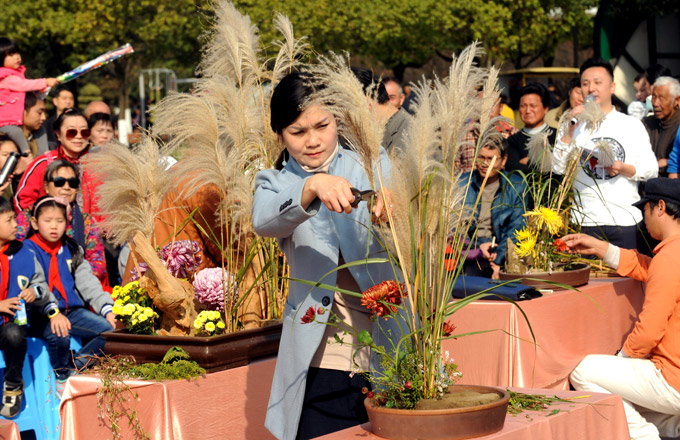

|
Officials from the National Reform and Development Commission, the Chinese Ministry of Finance and the UN attend a signing ceremony for the promotion of energy-saving lamps in Beijing in July. |
Replacing one standard bulb with an electricity-saving one may only save a small amount of electricity per year but, if millions are replaced, the cumulative effort can help save billions of kilowatt-hours of electricity and reduce millions of tons of CO2 emissions.
China has undertaken just such a project, now part of the country's UN-backed strategy for combating climate change. According to officials from the Phasing-out of Incandescent Lamps and Energy-Saving Lamps Promotion Project, China will replace at least 120 million incandescent bulbs with compact fluorescent lamps (CFL) this year, doubling the number replaced last year.
CFL bulbs use 60 to 80 percent less electricity compared to standard bulbs and usually have a longer service life.
In 1996, the Chinese government launched a "green lighting" program, aiming to replace energy-consuming bulbs with energy-saving ones.
To promote the program, the government has been providing financial incentives to encourage more individuals and public facilities to join the campaign.
Currently, the government provides 30 to 50 percent subsidies on CFL bulbs so that consumers can afford these premium products. This heavy subsidy is also an incentive for many public facilities and enterprises.
On top of the financial subsidies from the central government, many local governments also provide financial subsidies for the program. The Beijing municipality, for instance, provides an additional 40 percent subsidy to bring the total subsidy to 90 percent. Due to this high level of subsidy, a large volume of CFL bulbs are sold to its residents at a price as low as just one yuan per bulb. In some communities, the local government even provides CFL bulbs free of charge.
In 2008, financial subsidy for CFL bulbs from the central government reached 280 million yuan, resulting in the replacement of 62 million energy-consuming bulbs and purchases totaling 650 million yuan. This will help the country save 3.2 billion kilowatt-hours of electricity and cut 320 million tons of CO2 emissions.
This year's target of replacing 120 million energy-consuming bulbs will enable the country to further reduce its CO2 emissions and save even more electricity.
The country's green lighting program has also won support from the United Nation's Development Program and Global Environment Facility (GEF). As a result, the GEF granted $14 million to a three-year-program for China's green lighting project.
The project has an ambitious goal of saving a volume of 160 billion to 216 billion kilowatt-hours of electricity and reducing CO2 emissions by 175 million to 237 million tons within 10 years.
China is both the world's largest lighting product producing and consuming country. In 2008, the country produced 4.3 billion incandescent bulbs and 3.2 billion CFL bulbs. If all the incandescent bulbs are replaced with CFL ones, the country will save 48 billion kilowatt-hours of electricity each year, equivalent to a reduction of 48 million tons of CO2 emission.
(China Daily 12/05/2009 page5)













